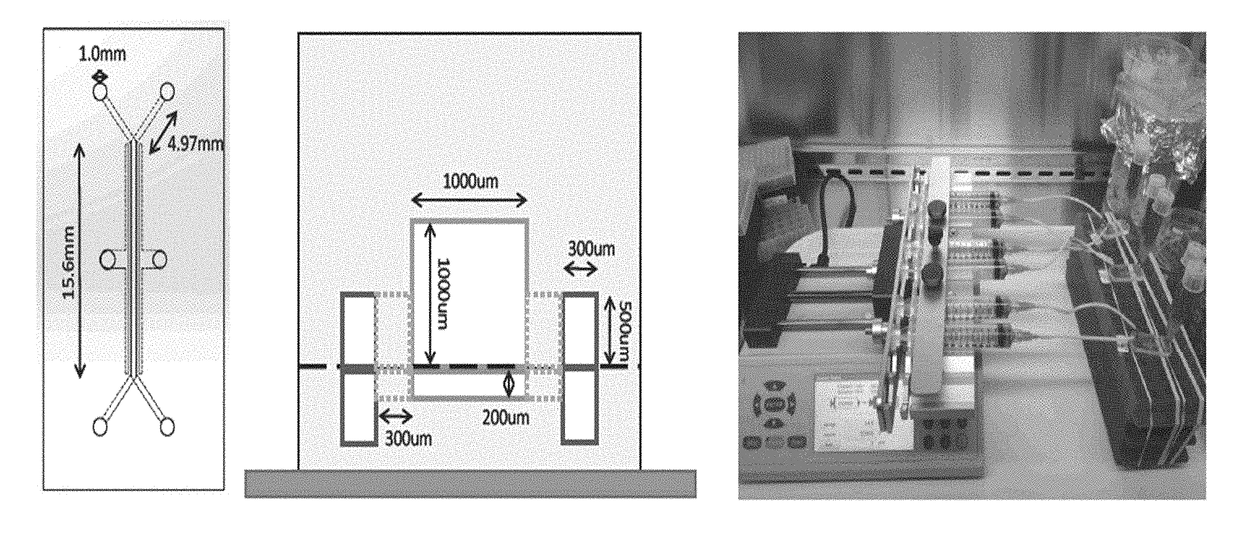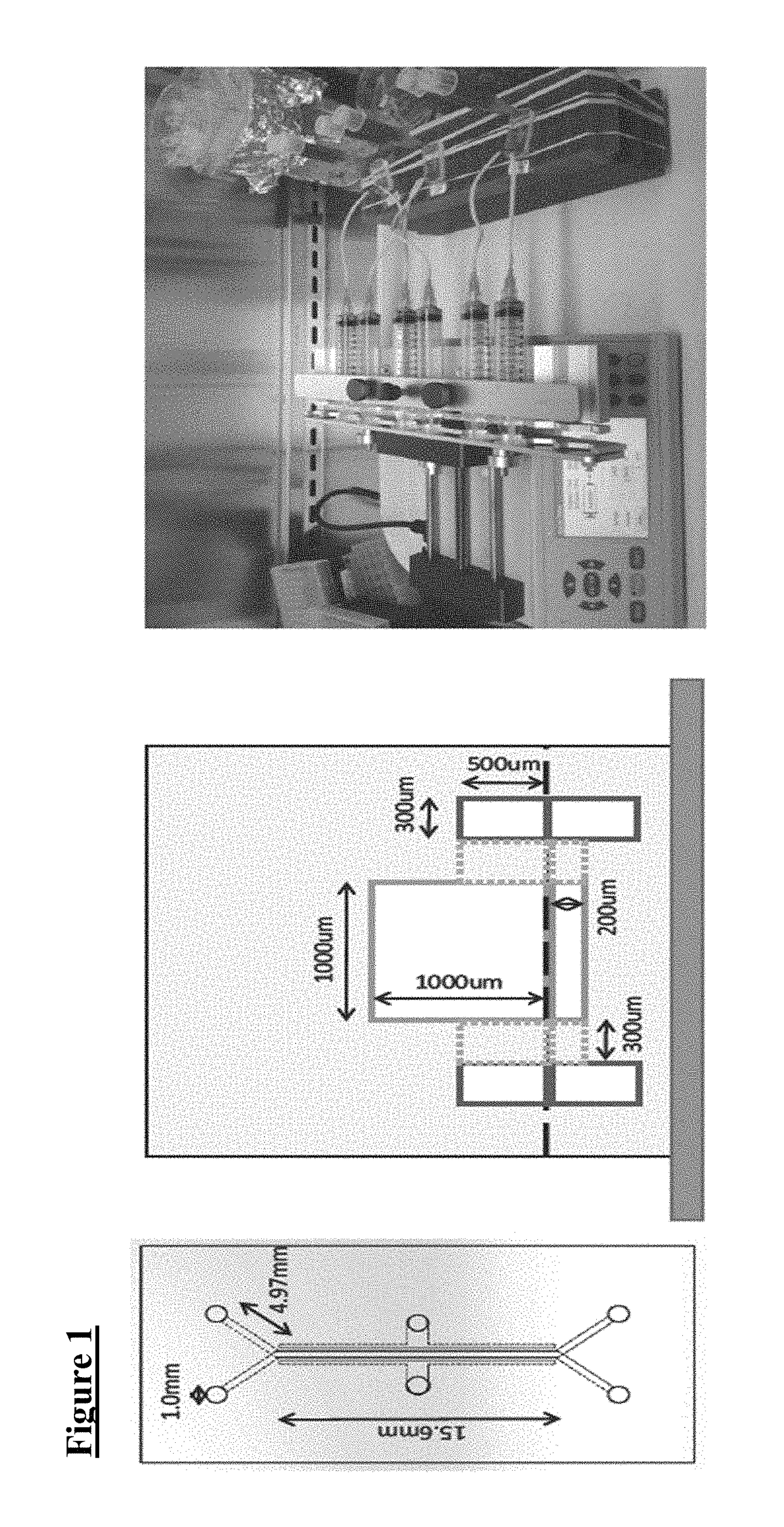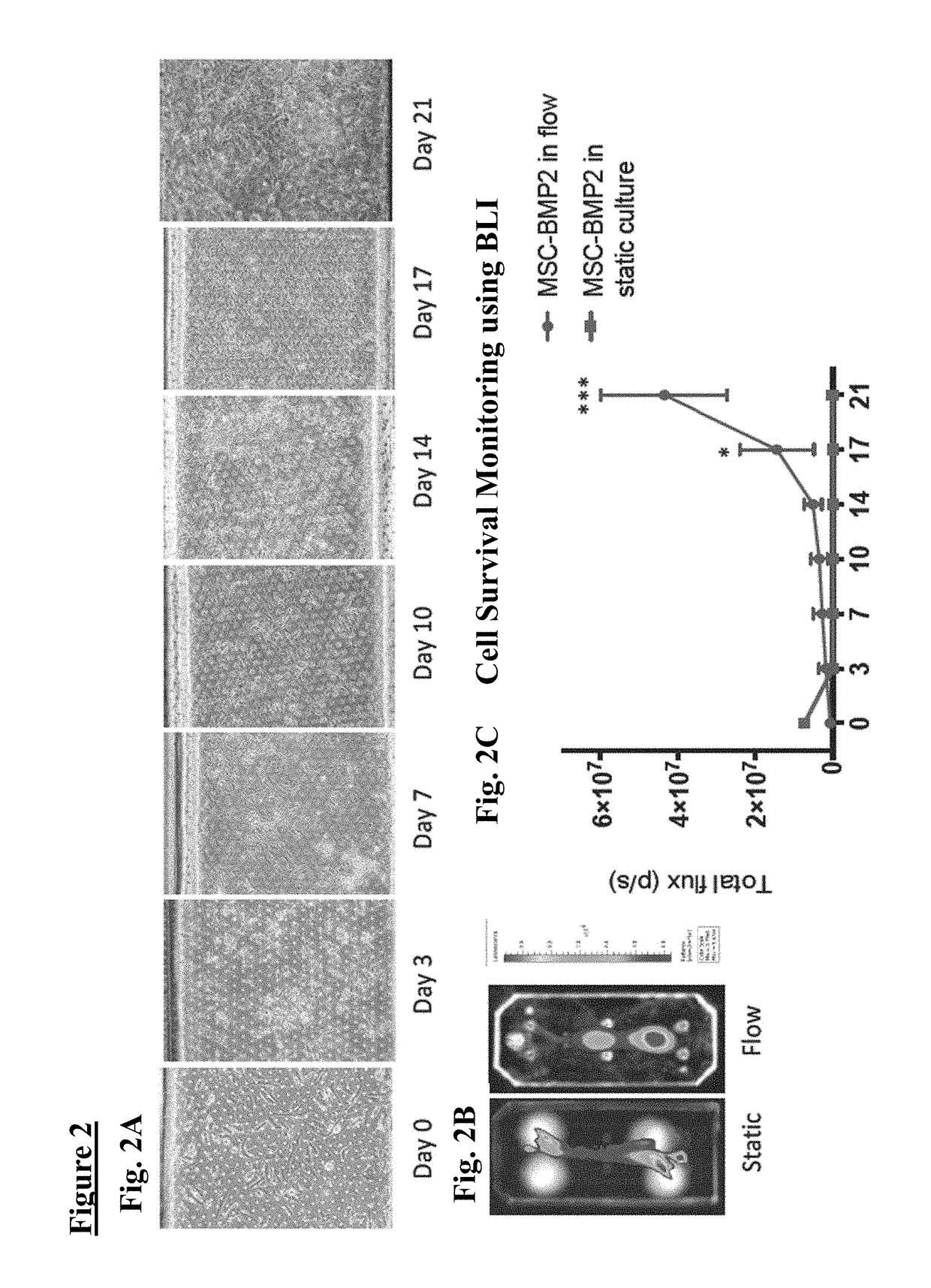Method of osteogenic differentiation in microfluidic tissue culture systems
a microfluidic tissue culture and microfluidic technology, applied in the field of osteogenic differentiation in microfluidic tissue culture systems, can solve the problems of difficult work with bone, difficult to image cells at the subcellular level within the bone environment, and difficult to study the intracellular dynamics of bone cells embedded within the mineralized tissu
- Summary
- Abstract
- Description
- Claims
- Application Information
AI Technical Summary
Benefits of technology
Problems solved by technology
Method used
Image
Examples
example 1
Micro Imaging for Non Invasive Monitoring of Stem Cell-Induced Mineralization
[0094]Mesenchymal stem cells (MSCs) can differentiate to various skeletal cells including osteoblasts. A common assay of MSC differentiation to osteogenic cells includes measurements of mineralization within the culture. Several methods can be used to monitor mineralization over time in chips
example 2
Labeling Agents for Stem Cell-Induced Mineralization
[0095]Fluorescence imaging—bisphosphonate imaging probes such as OsteoSense™ (Perkin Elmer) can be added to the chip at different time points, washed and then the chip is imaged in an optical scanner. Hydroxyapatite (HA) is a mineral form of calcium apatite and is the major mineral product of osteoblasts. Therefore, HA levels are a good biomarker for osteoblast activity. In addition, abnormal accumulation of HA can be indicative of a disease state. OsteoSense™ imaging agents bind with high affinity to HA. Since hydroxyapatite (HA) is known to bind pyrophosphonates and phosphonates as well as synthetic bisphosphonates with high affinity, OsteoSense™ agents were designed as bisphosphonate imaging agents. These probes consist of a pamidronate backbone functionalized with near-infrared fluorophore off the amino terminus of the R2 side chain. Specifically, OsteoSense™ imaging agents can be used to image areas of microcalcifications, bon...
example 3
Other Labeling Agents for Stem Cell-Induced Mineralization
[0096]Bisphosphonates (BPs; also known as diphosphonates), such as methylene diphosphonate (MDP) and zoledronic acid, can be labeled with technetium-99m ([99mTc]-BPs) for use in bone scintigraphy as has been used to detect osteoporosis and other skeletal-related events (SREs). These chemicals bind hydroxyapatite, which allow for imaging of bisphosphonates as described above. [18F]-Fluoride is another nuclide that is commonly used for bone imaging, and positron emission tomography (PET) and is believed to be superior to [99mTc]-BPs for the diagnosis of SREs.
[0097]Micro SPECT / PET imaging-99mTc-Methyl diphosphonate (Tc-MDP) can be added to the chip at different time points, washed and then the chip is imaged using a micro SPECT scanner. Alternative probes are [′8F)-Fluoride or 68Ga-Labeled (4-{[(bis(phosphonomethyl))carbamoyl]methyl}-7,1 O-bis(carboxymethyl)-I,4, 7, I 0-tetraazacyclododec-1-yl)acetic acid (BPAMD) [68Ga]BPAMD tha...
PUM
 Login to View More
Login to View More Abstract
Description
Claims
Application Information
 Login to View More
Login to View More - R&D
- Intellectual Property
- Life Sciences
- Materials
- Tech Scout
- Unparalleled Data Quality
- Higher Quality Content
- 60% Fewer Hallucinations
Browse by: Latest US Patents, China's latest patents, Technical Efficacy Thesaurus, Application Domain, Technology Topic, Popular Technical Reports.
© 2025 PatSnap. All rights reserved.Legal|Privacy policy|Modern Slavery Act Transparency Statement|Sitemap|About US| Contact US: help@patsnap.com



